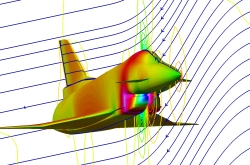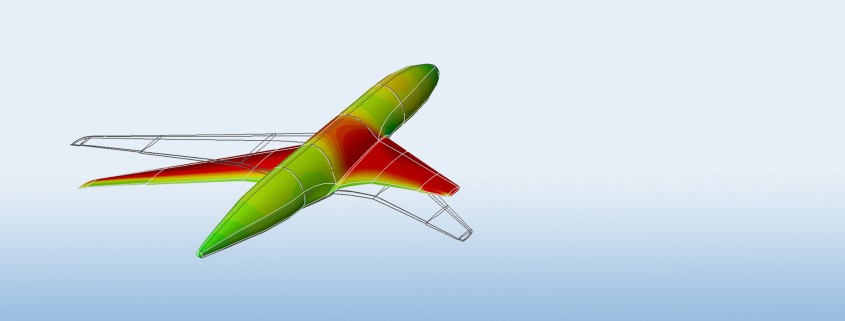 NLR participated in the ALEF project, conducted in the 7th Framework Programme of the EU. For NLR participation in the project is aiming at gaining knowledge on reliable and efficient prediction of aircraft loads near the extremes of the flight envelope by use of simulations.
NLR participated in the ALEF project, conducted in the 7th Framework Programme of the EU. For NLR participation in the project is aiming at gaining knowledge on reliable and efficient prediction of aircraft loads near the extremes of the flight envelope by use of simulations.
ALEF’s objective is to enable the European aeronautical industry to create complete aerodynamic data sets of their aircraft based on certified numerical simulation approaches within the respective development processes. i.e. ALEF will kick-off a paradigm shift from greater confidence in experimentally-measured data to just as great confidence in computational results. Beyond the scope of ALEF this paradigm shift will essentially influence the overall aerodynamic development process.
Aircraft are designed for optimum operations, e.g. the cruise flight for civil aircraft. However, the same aircraft is required by the authority to be strong enough to withstand heavy loads at the extremes of the flight envelope. Inaccuracy of loads prediction methods for these conditions could lead to unsafe design or otherwise gaining unnecessary weight, increased fuel consumption and losing competitiveness.
On the basis of the results of the research it can be concluded that the objective of the project is achieved. Reliable methods to predict aircraft loads near the extremes of the flight envelope have been identified and / or developed.
To improve the prediction of flight loads, a correction method is developed for the simplified aerodynamic method. This is done by using advanced computational methods based on CFD. With a smart approach now reliable flight loads can be predicted, with a limited increase of effort compared to the simplified approach.
For predicting severe gust loads in transonic flight conditions, a method is developed to enable gust representation in an advanced CFD simulation. The method has been successfully validated using known analytical solutions and has been applied to an X-31 fighter in transonic flight conditions.
For predicting maneuver loads at extreme control surface deflections, an innovative approach with discontinuous computational domains is developed. The limitation of the current method based on surface deformation is thus significantly relaxed. This approach is much simpler than the conventional overset grid method. The method has been validated and used for the simulation of a roll maneuver of a large civil aircraft with maximum aileron deflection.
Also visit our Flight Physics capability page.



